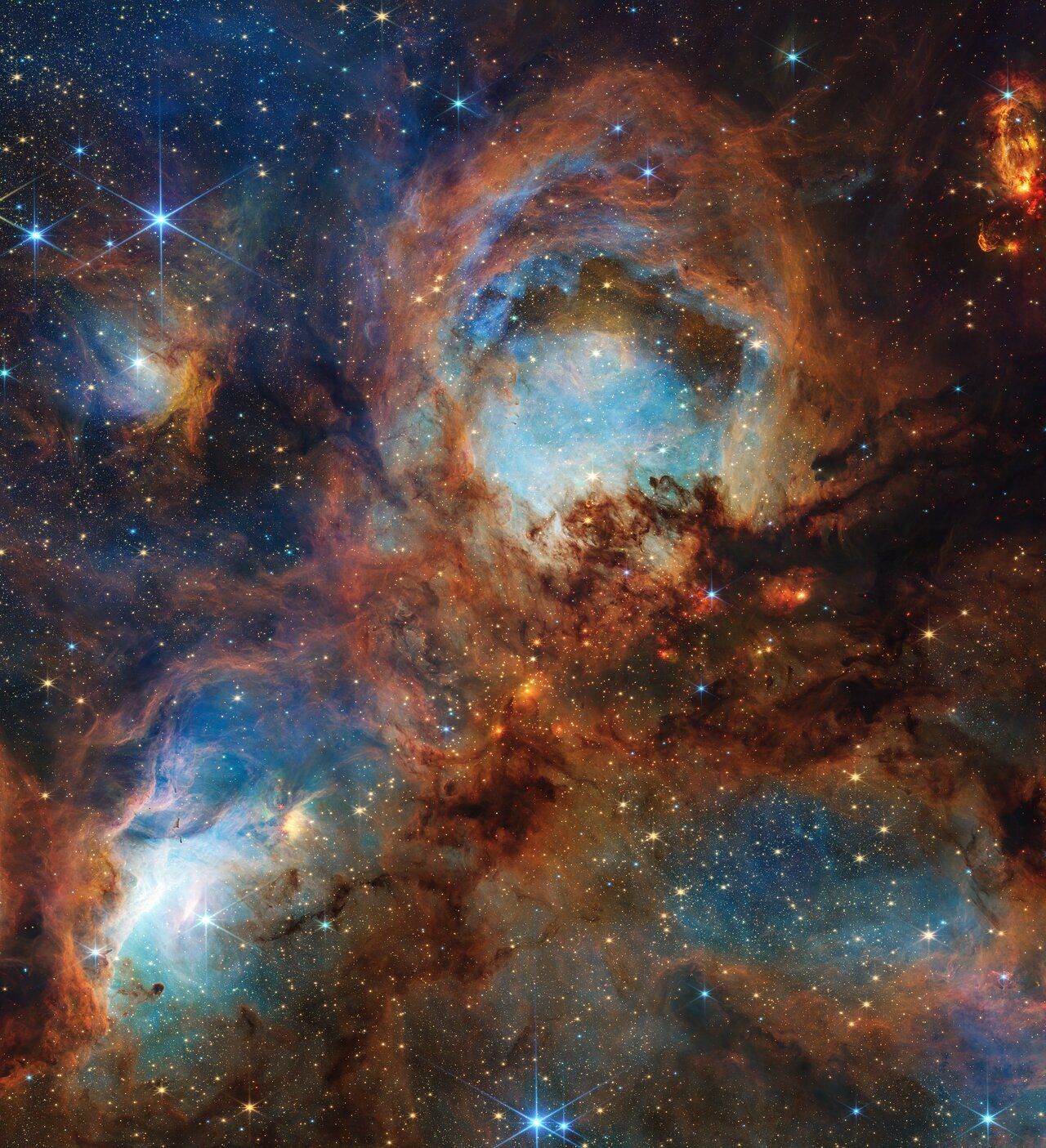- Bad Astronomy Newsletter
- Posts
- The nebula comes on little cat feet
The nebula comes on little cat feet
Carl Sandburg wasn’t talking about a vast cloud of gas and dust, but the poem still works for the Cat’s Paw nebula

The Trifid Nebula and environs. Credit: RubinObs/NOIRLab/SLAC/NSF/DOE/AURA
July 29, 2025 Issue #911
Mon livre, Ciels Extraterrestre
Under Alien Skies translated into French!
Mes amis! My latest book, Under Alien Skies, has been translated into French. To celebrate, I made this short video.
If you speak Français, then please pick up a copy wherever French books are sold.
Also, please listen to the video all the way through. I don’t think any French speakers on Bluesky or in my YouTube comments really did, or they would’ve said so. Comment puis-je le savoir? Aucune raison.
Step into JWST’s Cat’s Paw
Huge star-forming nebula is a jaw-dropper
NGC 6334 is a big cloud of gas and dust located 4,000 - 5,000 light-years from Earth. It’s in the direction of the constellation Scorpius, which is also the direction toward the center of our Milky Way galaxy. When we look in that direction we tend to see more clouds like it, because the Sun is located off to one side of the galaxy; when we look toward the center we’re looking downtown, where the action is.
NGC 6334 is also called the Cat’s Paw Nebula because, when viewed in optical light, the kind our eyes see, it has several rather distinct roughly circular sections to it arrayed out like the pads on a cat’s foot (also colloquially called toe beans, which makes a sort of sense). All of these sections are part of the same thick cloud of material, but in each the stars are being born at a pretty rapid pace.
Some of these stars are massive, far beefier than the Sun, and stars like that are extremely luminous (bright) and blue. The ultraviolet light they emit eats away at the material in the nebula, breaking apart the chemical bonds of molecules and atoms in a process called photodissociation. Over time, this carves out a huge bubble around those stars, creating the individual Cat’s Paw pads.
A lot of the nebula is comprised of hydrogen gas as well as dust: tiny grains of either rocky (silicate) material or long, complex carbon molecules that are called polycyclic aromatic hydrocarbons, or PAHs for short. Essentially, soot.
If thick enough, this stuff is opaque to visible light, but infrared light can pierce it. That’s just the kind of light detected by JWST, so it’s a prime target for the huge ‘scope. Plus, the nebula is big enough that even though it’s pretty far away we can see stunning details in it. Behold!

The Cat’s Paw nebula in infrared light, seen by JWST. Credit: NASA, ESA, CSA, STScI
Holy feline podiatry!
In this amazing image, three of the huge cavities dissolved out by the stars are obvious. This image is a composite of subimages taken in six different filters, each assigned to a different color in the final shot. Teal, for example, is hydrogen gas emitting at a wavelength of light of 1.87 microns. You can see it filling the cavities like fog in a cavern. Orange is light from the PAHs, and clearly that’s dominating here. The material is warm and emits infrared light in a similar way that your body does, and can be picked up in a thermal camera (which is another term for an infrared camera that detects heat). Deep red is coming from molecular hydrogen — H2, two atoms bonded together — which is colder material. Note that it’s most common where the nebula is very dark. That’s where the material is thickest, blocking more light from stars behind it, and therefore where it’s also coldest, insulated from the heat from the stars.
In fact the dust here is really thick. I’ve been getting used to seeing background galaxies in every JWST image, because it can see through the thinner dust in our galaxy, and many distant galaxies are bright in infrared. But I poked through the huge and glorious 11,000 x 12,000 pixel high-res version of this image, and didn’t spot any unambiguous galaxies! None. That dust (plus any dust lying behind it across the vast stretch of the milky Way) is thick.

Subscribe to Premium to read the rest.
Become a paying subscriber of Premium to get access to this post and other subscriber-only content.
Already a paying subscriber? Sign In.
A subscription gets you:
- • Three (3!) issues per week, not just one
- • Full access to the BAN archives
- • Leave comment on articles (ask questions, talk to other subscribers, etc.)

Reply